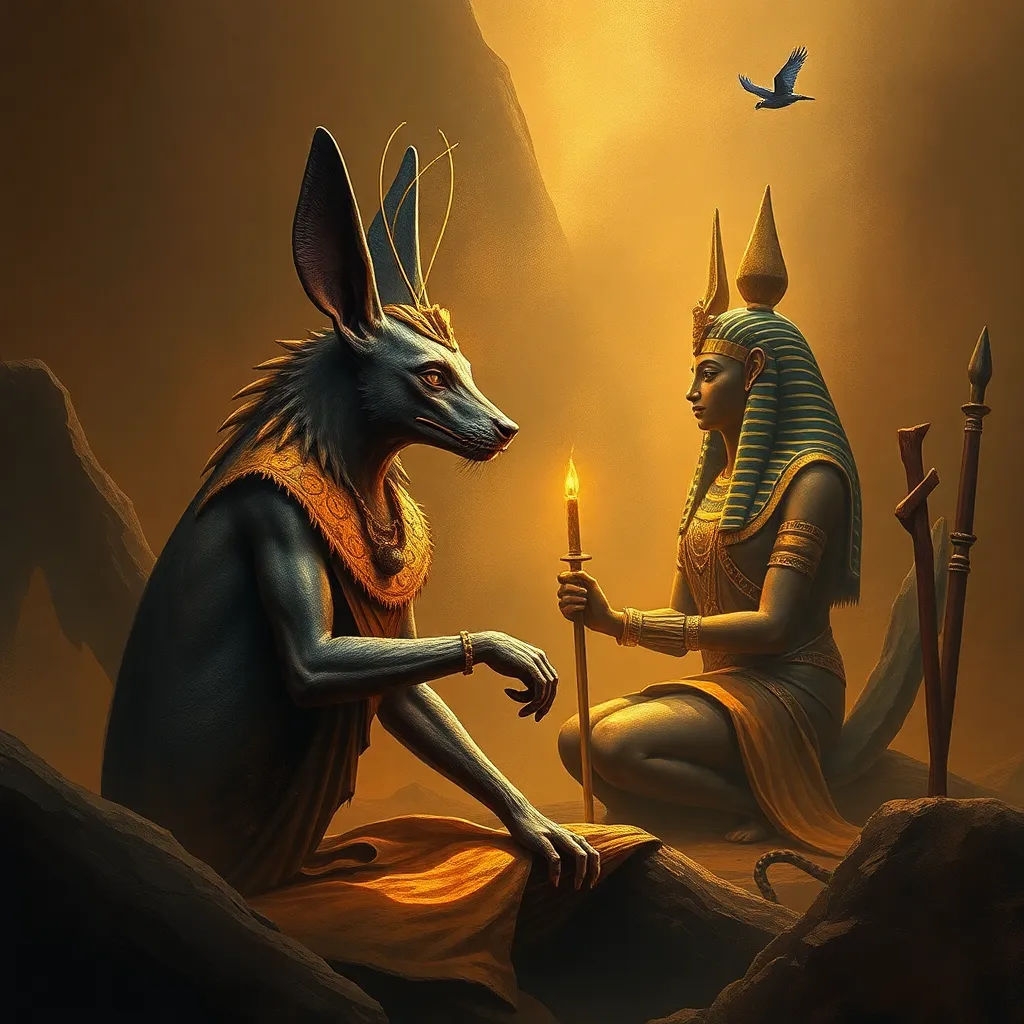Anubis and the Goddess Isis: A Story of Mourning and Protection
I. Introduction
The ancient Egyptian pantheon is rich with deities who hold significant roles in both life and death. Among these deities, Anubis and Isis stand out for their profound influence on the afterlife and their protective qualities. Anubis, the god of mummification and the afterlife, serves as a guide for souls transitioning to the next world, while Isis, the goddess of motherhood and magic, embodies the principles of rebirth and protection. This article aims to explore the interconnected themes of mourning and protection woven into their narratives and the cultural implications these themes hold.
II. The Mythological Background of Anubis
Anubis, often depicted as a jackal or a man with a jackal’s head, has origins shrouded in mystery. He is one of the oldest gods in the Egyptian pantheon, believed to have been worshipped long before the unification of Egypt. Anubis is primarily recognized as the god of mummification, responsible for preparing the deceased for the afterlife.
- Attributes: Anubis is associated with embalming, protecting graves, and guiding souls. His presence was vital in ensuring that the deceased had a safe passage to the afterlife.
- Symbolism: The jackal imagery symbolizes his role as a protector of the dead, scavenging in the desert where many bodies were buried. This connection to the earth and the afterlife evokes the funerary practices that were an essential aspect of Egyptian culture.
III. The Goddess Isis: A Guardian of Life and Death
Isis, revered as one of the most important deities in Egyptian mythology, holds diverse powers and attributes. As the goddess of motherhood, magic, and fertility, she plays a pivotal role in both the living and the dead.
- Motherhood: Isis is often depicted as the ideal mother, nurturing her son Horus and protecting him from harm.
- Magic: Her mastery of magic allows her to perform miracles, including the resurrection of her husband Osiris, which underscores her significance in the cycle of death and rebirth.
In the context of death, Isis represents the enduring spirit of life, demonstrating that death is not an end but a transformation. Her ability to bring Osiris back to life symbolizes hope and regeneration.
IV. The Relationship Between Anubis and Isis
In Egyptian mythology, Anubis and Isis are interconnected through their roles in the afterlife and their dedication to the deceased. They complement each other in ensuring that souls receive the care and protection they need as they transition into the afterlife.
- Interconnected Roles: Anubis prepares the body for burial and guides the soul, while Isis invokes the powers of resurrection, further aiding the souls in their journey.
- Mythical Examples: In the myth of Osiris, Anubis helps in the embalming process, while Isis uses her magical abilities to resurrect Osiris, showcasing their collaborative efforts in the afterlife.
V. The Themes of Mourning in Their Stories
Mourning is a prominent theme in the narratives of Anubis and Isis, reflecting the ancient Egyptian culture’s deep respect for the dead.
- The Mourning Process: Ancient Egyptians engaged in elaborate mourning rituals, including offerings and ceremonies to honor the deceased and ensure their safe passage.
- Anubis’s Role: As a guide, Anubis helps souls navigate grief and loss, providing comfort during their transition.
- Isis’s Mourning: The most poignant example is Isis’s mourning for her husband Osiris, which profoundly impacts her character and her determination to restore him, showcasing her strength and resilience.
VI. Protection as a Central Theme
Protection is a central theme in the stories of Anubis and Isis, illustrating their roles as guardians of souls in the afterlife.
- Anubis’s Protection: He is depicted as a protector of graves and a guide for souls, ensuring they are not lost or harmed in the afterlife.
- Isis’s Protective Qualities: Isis’s fierce protection extends to her son Horus, as she safeguards him from threats, including the malevolent Set.
The duality of mourning and protection in their narratives reflects the complexities of human emotions surrounding death, showcasing how grief can coexist with the desire to protect and preserve life.
VII. Modern Interpretations and Cultural Impact
In contemporary culture, Anubis and Isis continue to resonate, appearing in literature, art, and popular media. Their stories offer insights into the human experience of grief, loss, and the need for protection.
- Contemporary View: Anubis is often embraced as a symbol of the afterlife, while Isis is celebrated for her nurturing qualities and magical prowess.
- Influence on Art and Literature: Both deities have inspired numerous artistic interpretations, from ancient artifacts to modern novels and films, often symbolizing the eternal human struggle with mortality and the search for solace.
- Relevance Today: Their narratives encourage discussions about grief, the afterlife, and the protections we seek, making them relevant in modern contexts.
VIII. Conclusion
Anubis and Isis hold significant places in Egyptian mythology, embodying the themes of mourning and protection. Their interconnected roles highlight the rich tapestry of beliefs surrounding death and the afterlife in ancient Egypt. The lasting legacy of their stories serves as a reminder of the importance of understanding these ancient narratives, as they continue to provide comfort and insight into the human experience of loss and the protective bonds we forge in life and death.



